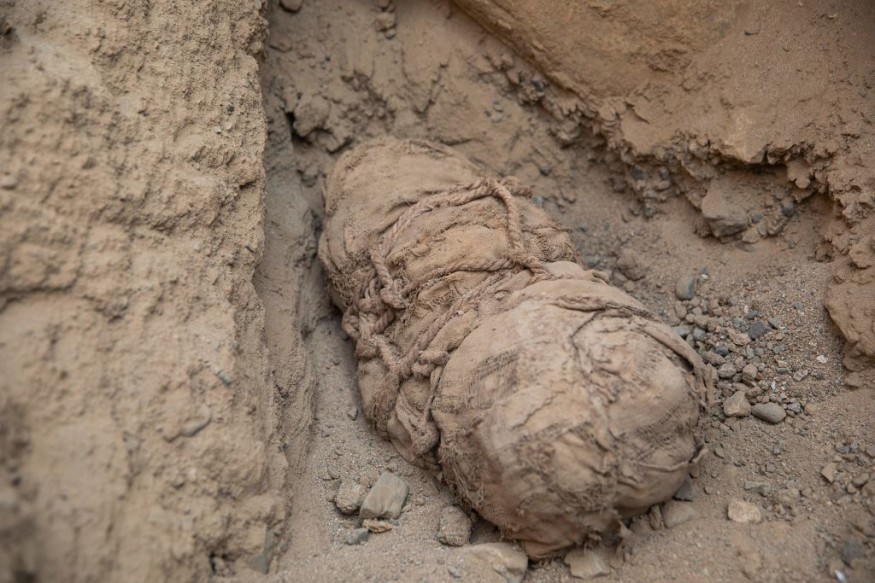Archeologists report unearthing a tomb near Lima, Peru, that contained six mummified children they believed were sacrificial escorts hundreds of years ago to accompany a dead nobleman to the underworld.
Unearthing 6 Peruvian Children Sacrifices in Lima, Peru

The small skeletons were seen wrapped tightly in cloth and found in the grave of a prominent man, who archeologists believe to be a political figure, discovered last November at a dig site in Cajamarquilla, roughly 24 kilometers east of Lima.
Pieter Van Dalen, the archeologist in charge of the dig site, explains that the children could have been relatives of the diseases and were placed in different parts of the tomb's entrance for the nobleman's mummy, one on top of the other. According to the team's working hypothesis, he adds that the children would have served as a sacrifice to accompany the nobleman's mummy to the underworld, reports ScienceAlert.
The city of Cajamarquilla was built out of mud roughly 200 BCE during the pre-Inca period and occupied the area until approximately 1,500. The city is believed to have been home to about 10,000 to 20,000 citizens.
Van Dalen explains that the mummies date back to roughly 1,000 to 1,200 years in the past.
Nearby, the team of archeologists found bones of seven adults who hadn't been mummified, as well as earthenware and remains of llama-like creatures.
The remains of the nobleman were unearthed only last year in a tome about 3 meters long and 1.4 meters deep in the city of Cahjamaquilla, one of the largest archeological complexes near the Peruvian capital of Lima. The nobleman had been about 20 years of age when he died and was entombed, tied up with rope with his hands covering his face.
Previously, in 2018, archeologists stumbled upon evidence of the biggest-ever sacrifice of children, where roughly 140 children were slain alongside 200 llamas as part of a ritual offering approximately 550 years in the past. Researchers determined that the children found were between the ages of five to 14, with most ranging from eight to 12 upon their death, reports CBSNews.
ALSO READ : 200 Threaded Human Spines on Poles Discovered in Peru As an Unknown Macabre Practice From 500 Years Ago
Pre-Inca Civilization, the Cajamarquilla City
On the outskirts of the Peruvian capital, Lima, a large urban center, reached its height on the eve of the Spanish conquest. The mud city of Cajamaquilla was first settled by a group of people known as the Hauri. Their culture flourished well along the Peruvian coasts from 400-600 AD. The extensive remains of the city today include blocks of mud-brick housing units, pyramids, and grand residences for the warriors of Hauri, according to the World Monuments Fund. From the surviving debris, it is easy to see how different peoples appropriated the ancient structures after the fall of the Hauri, which includes the Ychma, that moved into the area during the early second millennium, the into whose empire controlled most of the Andean region, and the Spanish that arrived in 1532.
RELATED ARTICLE : Storage Jar or Portable Toilet? Scientists Discover New Way to Find Out How Conical Pots Were Used in Ancient Rome
Check out more news and information on Archeology in Science Times.
© 2025 ScienceTimes.com All rights reserved. Do not reproduce without permission. The window to the world of Science Times.











